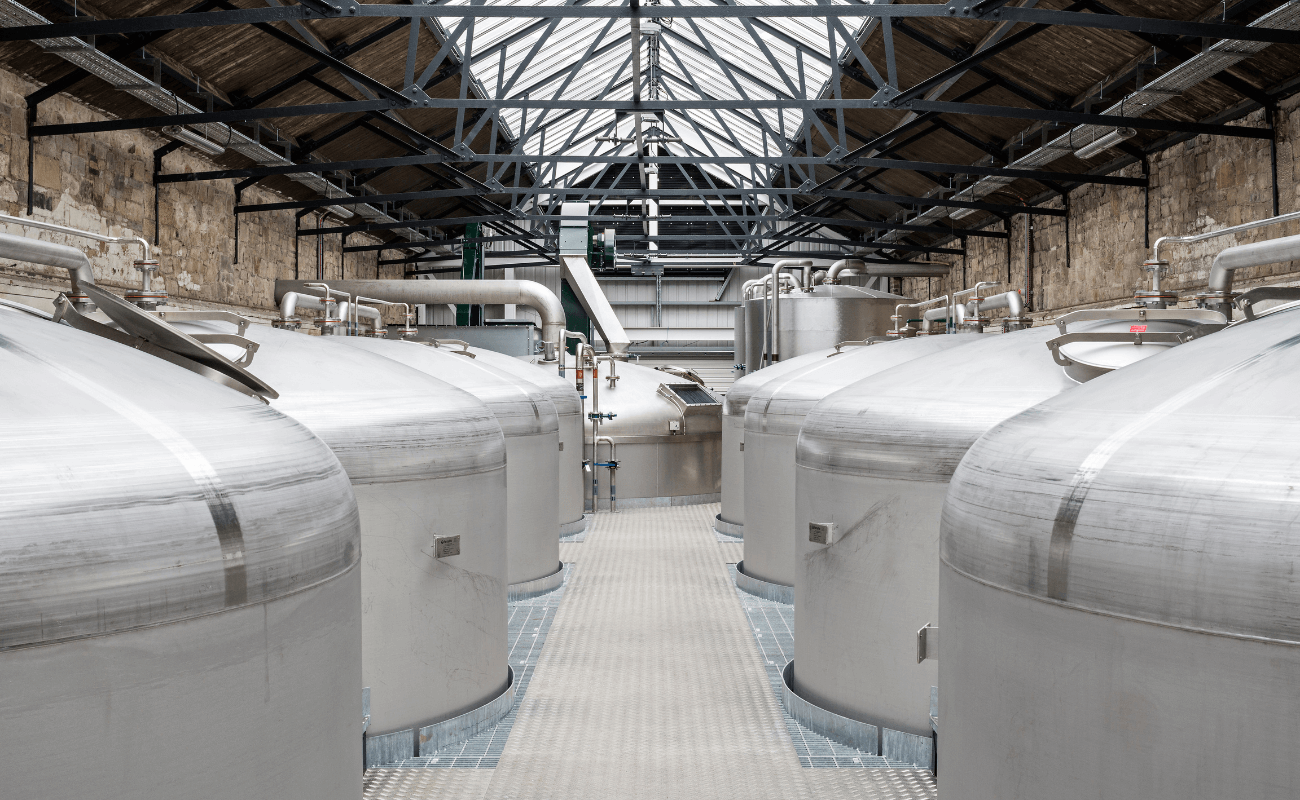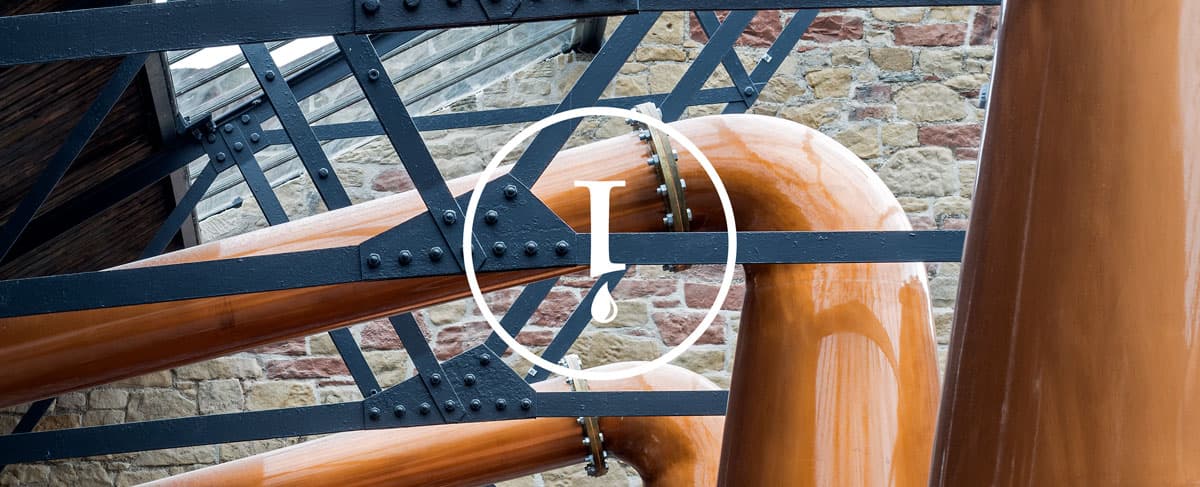05 Sep 2022
The Distillery Washback: Where Scotch Whisky is Born
Written by:
Kirsten Blackburn
Categorized under:
Distillery
/
Whisky
What does a Washback do?
A Washback is a tall cylindrical vessel in which the process of fermentation takes place, and it is usually used in brewing and distilling industries.
A sugary mixture – such as a barley mash in the production of whisky – is poured into the washback. Then yeast is added to trigger the fermentation process, a reaction which happens entirely within the washback.

The Fermentation Process and the Washback
How the washback is used has a significant effect on the eventual flavours of the spirit. The washback is usually filled only two thirds full with wort (the technical name for the grain mash that is about to be fermented).
This is because after the yeast is added, the reaction that turns the mash into alcohol can become quite exciting. Often the mixture, which begins to let off vast amounts of CO2, will bubble and rise, in some cases shaking the entire washback structure!
Washback Features:
Washback size and materials, yeast type, and length of fermentation can all affect the eventual flavours of the spirit. A shorter fermentation time might produce nuttier flavours, whereas a longer time will typically produce fruitier flavours.
Usually, the fermentation will last for around 60 – 100+ hours. Whilst a shorter fermentation time might produce nuttier flavours, a longer time will typically produce fruitier flavours. At The Borders Distillery, we ferment our mash for around 80 hours, before it is moved to the wash still to begin the distillation process, however each distillery will have its own preferences.
The size of the washbacks also differ, although generally they need to be at least big enough to hold thousands of liters of fermented wort. Some washbacks are ginormous – famously during WWII, servicemen from the Scapa Flow naval base used the washbacks at Highland Park as communal baths!
What are Washbacks Made of?
Primarily, washbacks should be strong, easy to clean, and easy to repair. The go-to materials are thus: wood, cast iron and stainless steel. One instance did record the Ben Nevis distillery creating their washbacks from concrete, however they were removed thirty years later!
Wood
Wood is the traditional material for a washback, usually larch or pine for their long straight form and tight impermeable grain which removes the risk of leaking. Further wood does not conduct heat, a factor that makes keeping the fermenting grain cool much easier.
Cast Iron
Cast Iron washbacks had their moment during the 19th and 20th century, when distilleries began experimenting with materials that would not only be easier to clean than wood, but would also live longer. However, these stills have since been mostly switched out now for stainless steel.
Stainless Steel
Stainless steel washbacks have a number of benefits. First of all, they are easy to clean – they can also be sealed in order to keep out bacteria and pollutants. These washbacks are probably the most common in the distilling world, as their general practicality makes them an attractive option.

Steel Vs Wooden Washbacks: Which is Best?
The question of which material it is better to make washbacks from is difficult to answer, and is often disagreed upon between distilleries.
Whilst most have chosen steel as their material of choice, some have refused to swap out their wood, claiming that the wood retains flavours that contribute to the whisky. Others appreciate the traditional aesthetic that would provides, enjoying the preservation of tradition in an industry tied up in history.
If we are to look at practicality, steel would be the obvious winner. During the process of fermentation, the cleanliness of the washbacks is key in order for the reaction to be successful.
Lactobacillus
If lactobacillus is present, it raises the acidity in the wort, which prevents the yeast from working as well as it should.
However, some distilleries choose wood particularly due to its properties in storing bacteria. There has been some research that indicates bacteria can impact the flavour development during fermentation in the washbacks, aiding in producing different spirit characteristics.
Wood is not ‘sealed’ like steel is – it is full of holes and cracks where the planks meet. They are usually cleaned with hot water and a powerful detergent, before being steamed for half an hour.
This is usually effective, however there is still a risk of some bacteria remaining. The smooth and flat properties of stainless steel significantly reduces these risks, making them appealing to distillers.
Cooled Washbacks
The most modern of the washbacks, cooled washbacks are closed systems which can be easily monitored and influenced by the distillers.
Book a tour of The Borders Distillery to see our washbacks and the entire whisky-making process.



 Please enjoy our spirit responsibly. Visit
Please enjoy our spirit responsibly. Visit 
